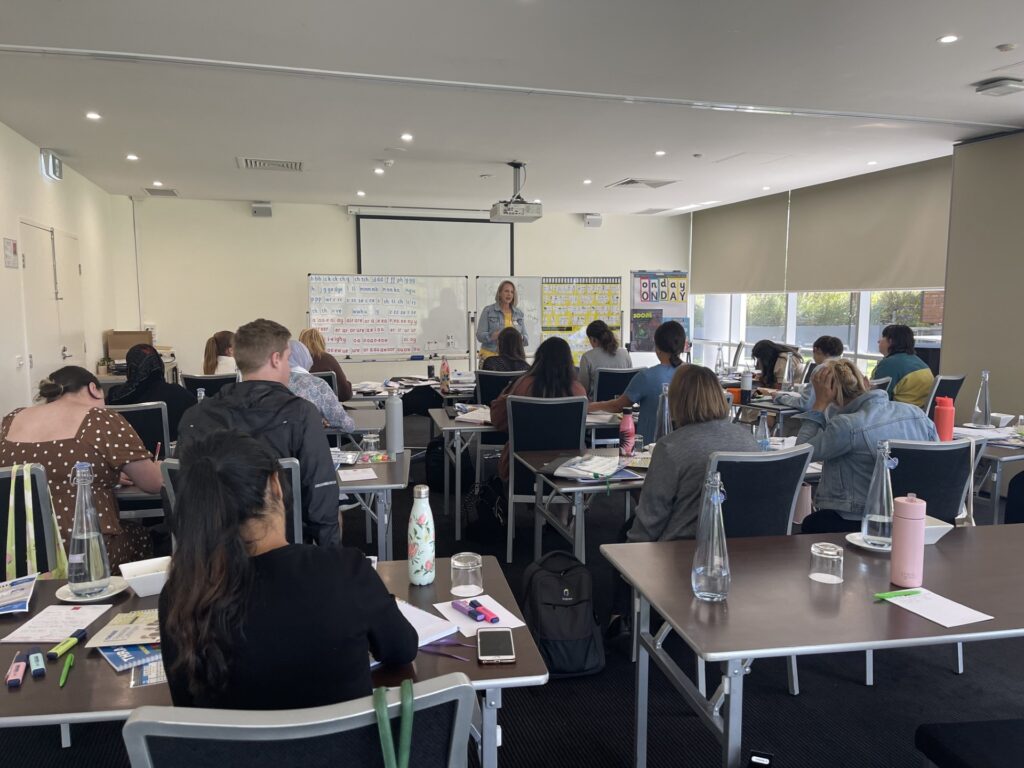
Results from this year’s NAPLAN tests revealed that one in ten students need additional support in literacy.
The data released by the Australian Curriculum, Assessment and Reporting Authority (ACARA) showed that nationally, around 10 percent of students are in the ‘needs additional support’ category. Across all year levels, around a third of Indigenous students ‘need additional support’.
Read the Term 4 edition of School News HERE
This was echoed by the OECD’s Programme for International Student Assessment (PISA) findings, which showed that since 2000, Australia’s mean score in reading and writing outcomes has declined by the equivalent of around three-quarters of a year of schooling.
In the Australian Curriculum, literacy encompasses the knowledge and skills students need to access, understand, analyse and evaluate information. Success in any learning area relies on a student’s ability to use the distinctive literacy that is important for that subject area or concept.
Poor literacy levels can broadly impact a person’s life. The World Literacy Foundation (WLF) said that people with below average literacy rates are more likely to experience poorer employment opportunities and outcomes, and lower wages. This can lead to a dependency on welfare, low self-esteem, and higher rates of crime.
Supporting students, teachers and families
A range of factors will impact a student’s performance in literacy, including their educational background, the language or languages spoken at home, and whether English is an additional language. Different learning needs should also be considered, for example dyslexia, vision or hearing impairment or ADHD or ASD which can make concentration more difficult.
While literacy is not just about a student’s ability to read and write, these skills form the cornerstone of literacy more broadly. Students who struggle with literacy may not have the tools to enjoy reading. Disappointment, frustration, and a feeling that it is too hard will hinder progress. Capturing a student’s interest before you read with them, and sharing their favourite books can help foster a love of reading.
A whole-of-school literacy framework may be useful to ensure literacy is taught uniformly across the school. This is particularly important for younger students who are developing these key skills.
At home, families can be encouraged to read often with their children. Along with books, magazines, newspapers, community newsletters and anything else that can be read to children can all be used as home reading sources.
Ongoing professional development is essential to ensure educators can deploy evidence based, best practice models for supporting all students’ literacy needs. This could be undertaken in small groups across subject areas or year levels, or as a whole-of-school opportunity.
Software solutions can at times prove useful in aiding student’s literacy development, and assist in reinforcing explicit teaching. It is important, though, to ensure that programs work towards Australian Curriculum achievements, and do not replace the classroom teacher.
What the experts say
Tom Richardson, CEO at LiteracyPlanet said the key to effective literacy support lies in recognising that every student is unique. “Students will respond differently to teaching methods. While some may thrive in writing, others prefer speaking or even drawing. By embracing a variety of approaches, educators can ignite students’ interest, making learning a fun, personalised journey.
“Educators can instill a sense of purpose in learning by aligning lessons, resources or texts with the student’s interests and everyday experiences. When they see the connection between the curriculum and their own world, their engagement, motivation, and enthusiasm for learning increases.”
When selecting resources to aid with literacy development, Mr Richardson recommends offering a wide range of activities and exercises to maintain student engagement and promote comprehensive literacy development. “Ensure the chosen resource includes diverse reading levels that will help build upon each individual’s learning level, and aligns with the individual learning styles, strengths, and weaknesses of each student.
“Learning goals should facilitate the achievement of specific literacy objectives and cater to individual student needs. Educators should consider resources or software with a user-friendly interface.
“Testing the student and educator’s experience with a program before making a decision is important for the long-term effectiveness and enjoyment of the program. Always look for a free trial before committing long-term.”
Denyse Ritchie from The THRASS Institute said most literacy problems can be overcome by specific interventions tailored to the learners’ needs. “Sadly, almost all (if not all) ‘scope and sequenced’ intervention programs start with teaching or reteaching ‘simple code’. Learners are getting further doses of the code they have relied on and therefore the intervention is not addressing the learners’ needs. These learners need to be taught the complexities of the English code to develop an understanding of the Alphabetic Principle beyond ‘simple phonics code’. They need to be explicitly taught the real English phonics code, including morphemes and etymology.”

Ms Ritchie said learning in an additional language brings its own complexities. “To ensure EAL students perform on par with their peers we need to cover specific and non-negotiable elements to teach speaking and to successfully move from oral language to written language. Having a system to visually connect speech sounds to spelling (phonics) patterns is a big help in EAL teaching.
“For many who learn English as an additional language, English is first taught as a transparent 26-letter sound simple code. This incorrect understanding holds them back in their independent learning of spoken language and, as with those struggling with decoding and encoding in literacy, interrupts the reading and spelling process. Understanding the ‘real’ or authentic code in any language is essential to building successful literacy acquisition.”
Professional Development around literacy should further develop teachers’ knowledge to enable them to become better and more effective in their craft, Ms Ritchie said. “Professional Development to me is ‘sacred time’. Focussing on how to deliver a one-size-fits-all ‘Scope and Sequenced’ program, rather than developing teacher knowledge is an expensive and irretrievable opportunity, for the school, the teacher, and the learners that will be immersed in the program.
“Effective teachers reflect on and evaluate their teaching decisions and practices, they do not simply go through the motions of teaching being compliant and following manuals with fidelity.”







